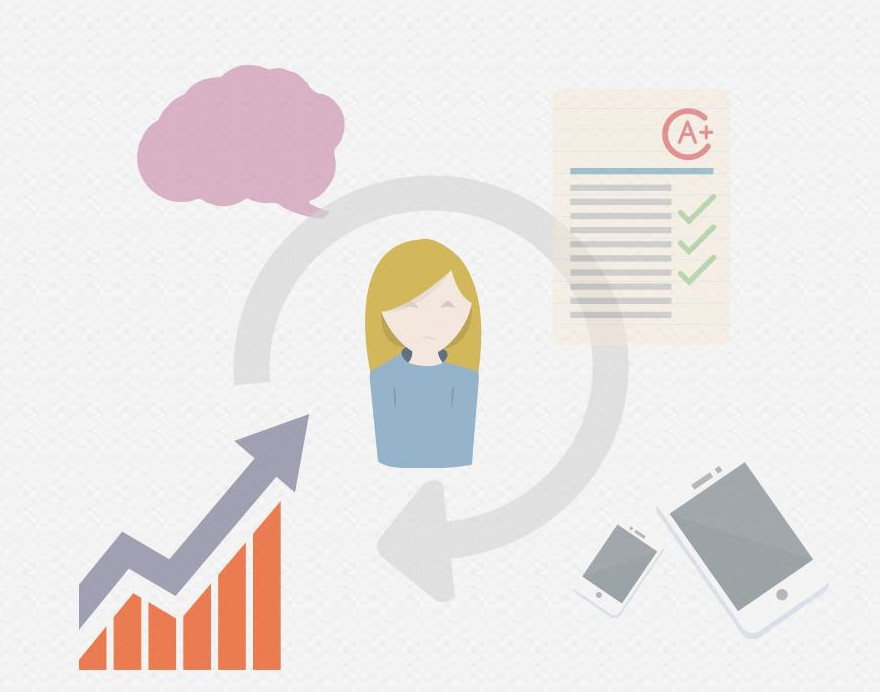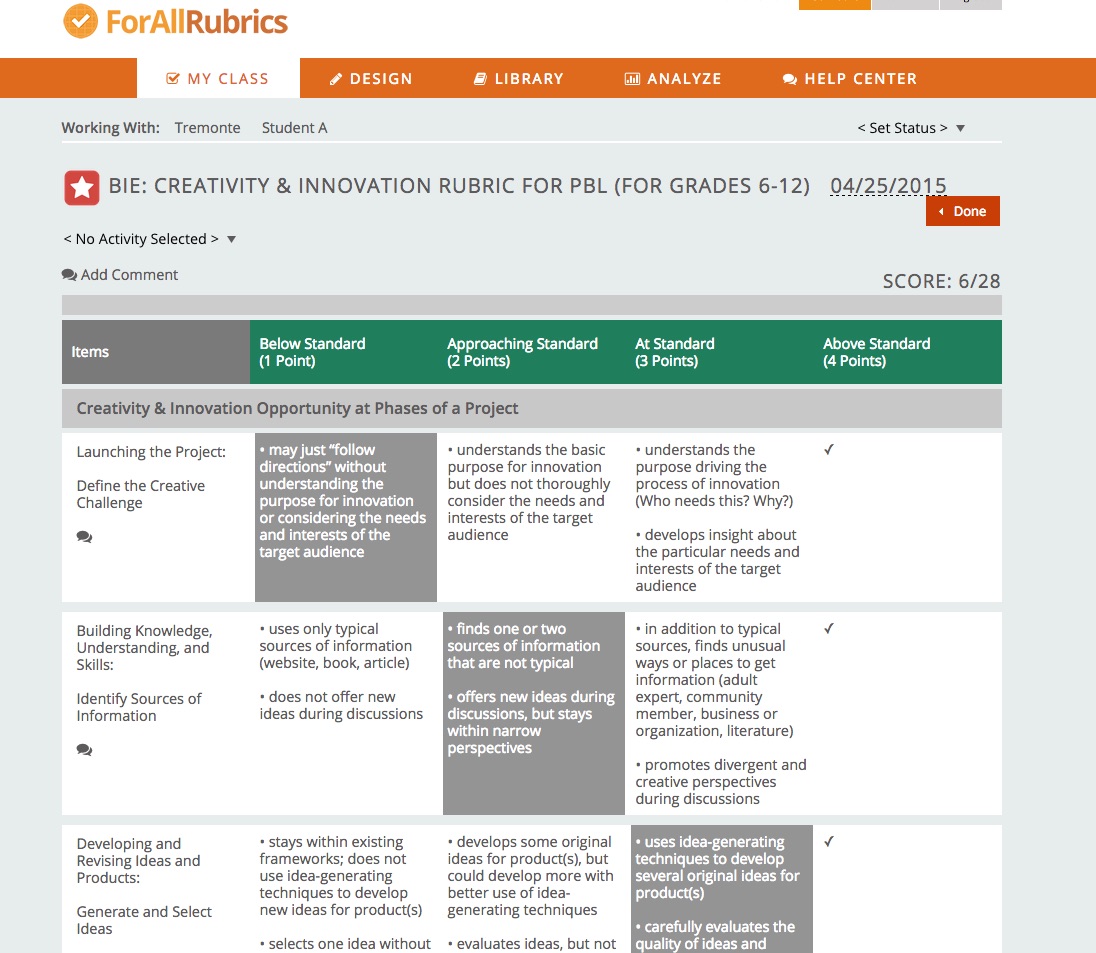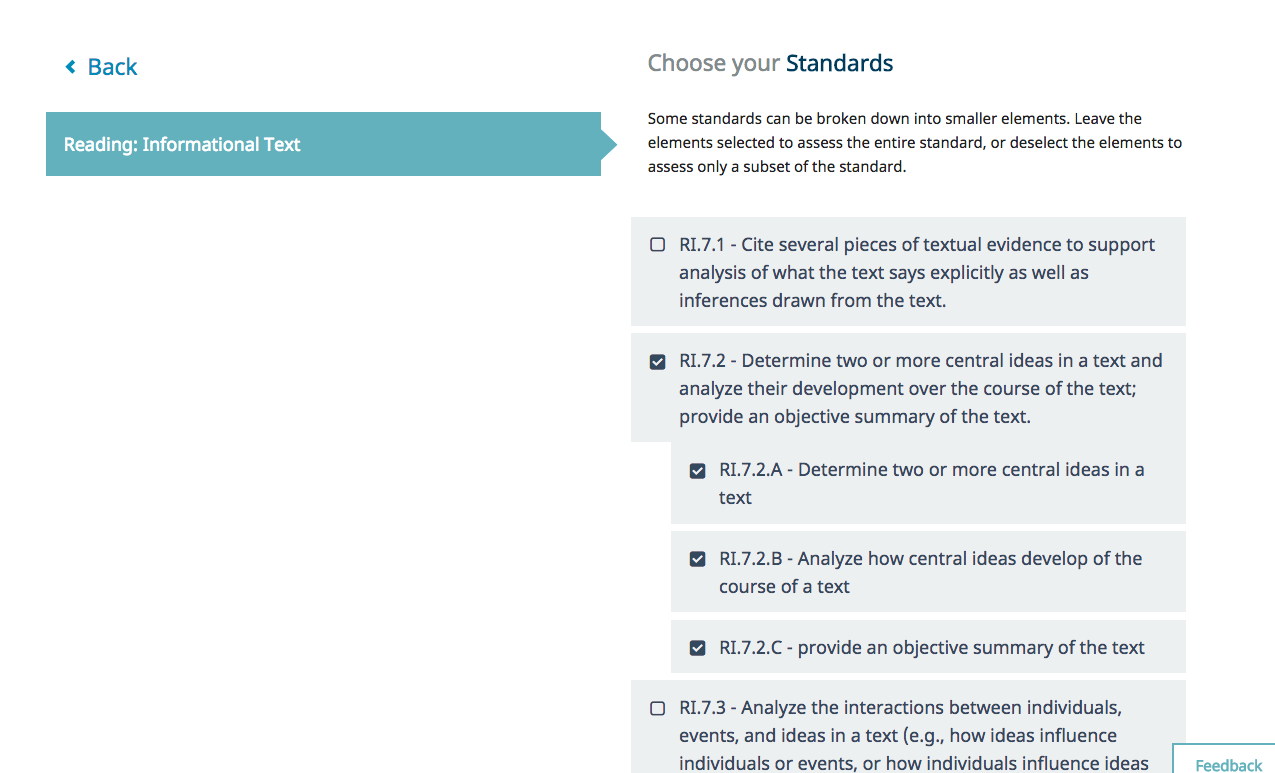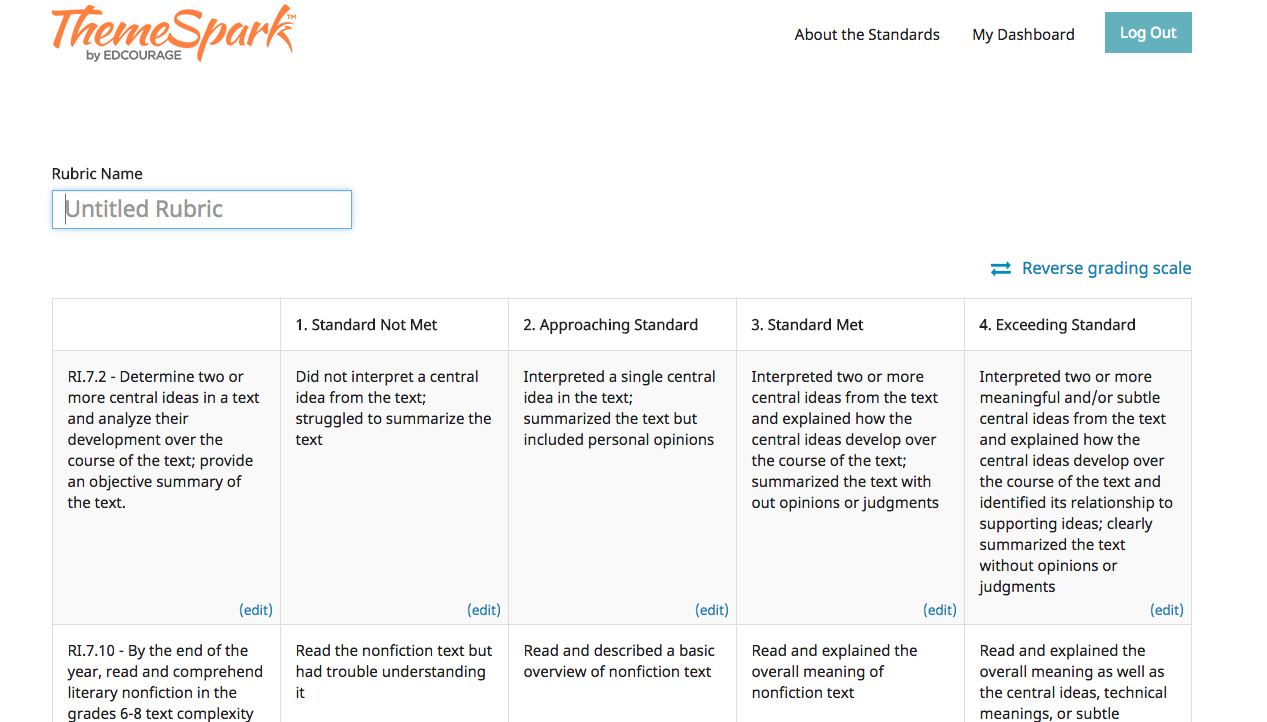
Education is no longer a practice that happens to a student, but one that happens with a student (Bayse, 2014). Promoting student autonomy continues to be an important aspect of preparing students for the future. Previously this year, I investigated the benefits of student autonomy in project-based learning, digital tool selection, and the troubleshooting of technology. In my exploration of ISTE Teaching Standard 2 this week, I am once again investigating student autonomy, but as an important aspect of assessment for learning. I have chosen to specifically focus my exploration of this standard on criterion b. which asks teachers to “develop technology-enriched learning environments that enable all students to pursue their individual curiosities and become active participants in setting their own educational goals, managing their own learning, and assessing their own progress.”
Assessment for learning describes using assessment results to inform instructional practices, and it is often broken into two categories: summative and formative. Summative assessment refers to the evaluation of student learning at the end of a unit of study. Alternatively, formative assessment refers to the monitoring of student learning during a unit of study so that instruction can be modified to meet student needs. Formative assessment assissts both teachers and students alike to identify areas of strengths and weaknesses. It is intended to be ongoing and not embodied in a high stakes final grade. Instead, learning should be modified based upon the feedback gathered, in order to make spiraling attempts at learning. Many methods of formatively assessing students exists. Exit tickets at the end of a lesson can garner data on student mastery of a concept, which can then be used to tailor instruction for the next day’s lesson. Technologies such as polling software can obtain and display student data immediately for the entire class to view and, as a result, be used to modify teaching in real time.
Personalizing Assessment for Learning
Assessment for learning strategies are most impactful when assessment is personalized, allowing students to be involved in their own growth. Basye (2014) claimed that “in addition to responding to students’ needs and interests, [personalization] teaches them to manage their own learning — to take control and ownership of it” (para. 14). Technology is useful in the self-monitoring process, in that online grade books like EnGrade and learning management systems such as Blackboard or Edmodo can allow students to play an active role in tracking and monitoring their progress. Stiggins and Chappius (2005) wrote in “Using Student-Involved Classroom Assessment to Close Achievement Gaps” that students are no longer shocked at the end of a grading period by their grade when formative assessments are implemented, and, as a result, trust and confidence are established between teacher and student.
Building a Rubric Together
The next step is to involve students in the selection of standards and subsequent formation of rubrics. Used at the beginning of a unit, clear guidelines and requirements can direct students in their learning. We know that students are most effective and actively engaged in their learning when they are fully aware of the end goal, instead of when they are forced to blindly follow a potentially unknown direction of a teacher (Stiggins & Chappuis, 2005). Students become active participants in setting their own personalized learning goals, and thus maintain responsibility for the path to get there.
Teacher and student can work together to have a shared objective (Stiggins & Chappuis, 2005). According to Boud (1995) students should not only be involved in determining the criteria for an assignment, but also in the actual assessment and evaluation of their work. Students become partners in the learning process and the evaluation of their achievement (Stiggins & Chappuis, 2005). They can keep track of their performance and change their performance as needed (Stiggins & Chappuis, 2005). This results in the formation of the lifelong skill of making judgements about performance according to criteria (Boud, 1995).
Student autonomy is also established by making it possible to practice this skill against other students’ work (Boud, 1995). Moroder (n.d.) noted that young adults already give feedback daily to one another in social settings. They critique one another, ask each other questions and share information; students also practice this online with their use of social media and collaborative video games. So, why not harness this in the classroom? Wiliam (date) claimed that peer assessment benefits both the assessed and the assessor, as students learn what meeting criteria looks like by evaluating both the successful and unsuccessful work of peers.
Using Technology
How do can educators use technology to support the implementation of formative self and peer assessments?
For All Rubrics
My exploration of digital tools first led me to a website and app called ForAllRubrics.com. It is a free resource that can be used holistically to integrate many aspects of assessment for learning. Class rosters are easily uploaded, navigation of the site is simple, and the digital tool includes an online grade book, access to a rubric library, and the ability to analyze the collected data. Students can also create their own log-ins, without a required email address, to track personal progress. Students can also communicate with teachers about their achievement by reviewing received rubric scores and making comments back to the teacher. With this tool, the grading process is not a mystery, and it is open to continued commentary between the teacher and student. Badges are another layer of this tool that can be implemented to encourage student achievement and allow students to monitor their own growth. As I shared this tool with my graduate cohort, many of them encouraged me to explore the badging option a bit further. I am inexperienced in the use of educational badging, so I have been somewhat shy in my approach to this added layer. However, I see how stepping away from a focus on grades alone can motivate students who are otherwise discouraged by poor marks. It also is an easy way to focus on a standards-based approach to learning. Students become very cognizant of which standards they have mastered when a visible badge is the end goal. Lastly, badges offer a motivator in a similar vein to video game play (another topic I previously explored) as students often want to “level-up” by achieving subsequent badges. ForAllRubrics can even be used in a portable fashion on an iPad, iPhone or even offline in order to encourage a mobile classroom.
While all aspects of this site support assessment for learning, its ability to create rubrics in a partnership with students that could then be used to self or peer assess. This tool allows you to create your own rubrics and assess students within the site. Most impressive about ForAllRubrics is that once students are logged in, they can use a laptop or tablet to self or peer assess with the click of a mouse or the touch a finger. Teachers can then log and analyze all of the data.


Theme Spark
The biggest setback to ForAllRubrics is the inability to translate Common Core State Standards into rubric criterion. While, you can include standards, you still have to create the language of the values independently. As a result, this might be cumbersome to design with students. You can upload your own rubrics, so my next thought was to find a secondary resource that does align Common Core State Standards with rubric design. My professor @CherylSteighner recommended ThemeSpark.net and I was very impressed with it. As you can see in the visuals below, it is simple in design and navigation. As a result, working with students to select appropriate standards and design a rubric would be a seemingly straightforward process. These tools are both so intuitive that I am excited to try one or both of them before the end of this school year.


It is important to remember that formative assessment is meant to be just that…formative. I often struggle with this in my own classroom. Despite not being a high stakes grade, I still often put formative assessment grades in my grade book. I find that this motivates students and, when given less weight, it can function well. However, is this best practice? Again, I turned to my graduate cohort for advice on this. I was encouraged that everyone agreed that this isn’t always an easy practice to navigate. One suggestion by @RobinHenrikson was to weight grades more heavily towards the end of a unit of study in order to acknowledge that growth has occurred and that students should be assessed based upon what they know, not what they did. My takeaway from this post is that students need to be taught how to be metacognitive in their learning, and rubric creation, self assessment and peer assessment can all assists in this endeavor.
Resources
Boud (1995) Enhancing learning through self-assessment. London: Kogan Page.
Basye, D. (2014, August 5). Personalized vs. differentiated vs. individualized learning. Retrieved from http://bit.ly/1MC5w19
Moroder, K. (n.d.). Personalized Learning Isn’t Enough. How Do We Create Learners? Retrieved from http://www.digitalpromise.org/blog/entry/personalized-learning-isnt-enough-how-do-we-create-learners
Stiggins, R. & Chappuis, J. (2005). Using Student-Involved Classroom Assessment to Close Achievement Gaps. Theory Into Practice, 44(1), 11-18.
Wiliam, W. (n.d.) Self and Peer Assessment – Dylan Wiliam [Video file]. Retrieved from http://www.journeytoexcellence.org.uk/videos/expertspeakers/selfandpeerassessmentdylanwiliam.asp
Annie, you did a wonderful job describing the two formative assessments tools: For All Rubrics and Theme Spark. I have heard about Theme Spark and I remembered learning about this tool at the Seattle Tech for Schools Summit last fall. The rubrics align well with the CCSS and it is easy for students to navigate through the standards.
In an earlier post, someone suggested that you research Dylan Wiliam and I believe you mentioned having heard him speak at a workshop. His name recently came up at my building about starting a book study on his book, “Embedded Formative Assessment”. I have signed up for the study which begins in May and I am looking forward to learning more about using formative assessments in the classroom. Your post was very informative!
Annie, your first line captures your theme of the post perfectly. You write, “Education is no longer a practice that happens to a student, but one that happens with a student (Bayse, 2014).” Your focus on collaborative and unique rubrics is about helping the student take ownership and be involved in their own education process. I appreciate your thorough research of the various rubric resources and think you are really on the right track by focusing on the students. Kudos!
Annie, great job! Everywhere I look and everything I hear in the last few months is focused on turning the decisions about learning over to the students. I assume I’m just paying more attention and this idea is not new… It makes sense that student buy-in and ownership is important in planning the learning opportunities, but I was a bit surprised to think along these same lines in regards to assessment. The ways in which you’ve explained it really helps me to understand the importance, it helps to paint the full picture. And it really does make me reflect back to my high school days, when my grades could be a bit of a surprise. Those days are long gone!